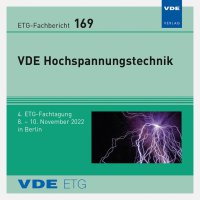Numerical Simulation of Electric Field Distribution in HVDC Gas Insulated Lines Considering a Novel Nonlinear Conductivity Model for SF6
Konferenz: VDE Hochspannungstechnik - 4. ETG-Fachtagung
08.11.2022 - 10.11.2022 in Berlin, Germany
Tagungsband: ETG-Fb. 169: VDE Hochspannungstechnik 2022
Seiten: 6Sprache: EnglischTyp: PDF
Autoren:
Hensel, Hendrik; Joergens, Christoph; Clemens, Markus (Bergische Universität Wuppertal, Germany)
Inhalt:
Gas insulated transmission lines (GIL) consist of a grounded shell, insulating gas and an inner conductor, which is sus-tained by a massive spacer. As an insulating gas sulfur hexalfluoride (SF6) is mainly used. The spacer consists of epoxy resin. Both materials electric conductivity shows a nonlinear behaviour, depending on different parameters, e.g. temperature and electric field intensity. In DC operation, space charge accumulation in the insulating material appears. Due to this phenomenon, the electric field varies and influences the electric conductivity of the material. Electric field stress in the GIL can lead to partial discharge and system failure, especially at the spacer-gas interface. Numerical simulations are used to determine the electric field distribution in a GIL. For that, the electric conductivity of the epoxy spacer is mostly described by an electric conductivity model. In contrast to the nonlinear conductivity of the spacer, the electric conductivity of SF6 is usually considered to be constant, although the gas electric conductivity shows a dependency on electric field, temperature and pressure, as is shown in measurements from literature. Alternatively, the charge transport in the gas can be described by a drift-diffusion model, which leads to a high computational effort. Since the electric conductivity is decisive for the electric field distribution under DC voltage, the knowledge of the exact electric conductivity is crucial for precise simulation results. Measurements from literature are used to develop an electric conductivity model for SF6. The comparison of the simulations results with and without applied electric conductivity model for SF6 show distinct differences in the electric field distribution and the maximum values within a GIL. It can be asserted that the developed electric conductivity model allows an accurate simulation of the electric field but with less computational effort, e.g. if the drift-diffusion model is utilized.


